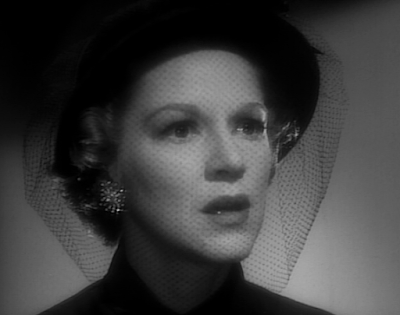May 26,
1948, release date
Directed
by Anthony Mann
Screenplay
by Leopold Atlas, John C. Higgins
Based on
a story by Arnold B. Armstrong, Audrey Ashley
Music by
Paul Sawtell
Edited by
Alfred DeGaetano
Cinematography
by John Alton
Claire Trevor as Pat Regan
Marsha Hunt as Ann Martin
John Ireland as Fantail
Raymond Burr as Rick Coyle
Curt Conway as Spider
Chili Williams as Marcy
Regis Toomey as Fields
Whit Bissell as the murderer
Cliff Clark as Gates
Distributed
by Eagle-Lion Films
Produced
by Edward Small Productions, Reliance Pictures
Raw
Deal is a much better
film than any description that I have ever read of it. Even the copy on the
back of the DVD I borrowed doesn’t do it justice, and I recommend reading it
only after you see the film because it gives away almost every plot twist.
(Bah. Humbug.) But the pleasant surprise is the many layers to the story and to
the main characters. It draws viewers in and allows them to identify with the
main characters: Joe Sullivan, Pat Regan, and Ann Martin, all of whom are
surprisingly multilayered.
Claire
Trevor is fantastic as Pat Regan, and I’m beginning to think her performance in
Raw Deal is one of her best. She also
appears in Born to Kill, which is one
of my favorite films noir. Her performance as Helen Brent may be the only one
that can beat her performance as Pat Regan. She and Lawrence Tierney are
perfectly matched in Born to Kill:
The two of them give equally ferocious performances.
Click here
for my blog post about Born to Kill.
Better yet, get a copy of the DVD to see the film and listen to the audio
commentary by Eddie Muller.
Back to Raw Deal, in which Claire Trevor proves that she can give a
character emotional depth and convince the audience of it. Pat Regan plans to help her boyfriend Joe Sullivan escape
from prison so they can be together and he can collect the $50,000 that Rick
Coyle owes him. Joe and Rick did a job together, and Joe went to prison because
he wasn’t willing to talk about Rick’s involvement. Rick doesn’t want to see
Joe or give up the money. A lot of the tension in the story comes from Joe’s
desire to get what he feels he deserves and from Rick Coyle’s preference to see
Joe dead rather than give him his fair share.
But Joe Sullivan
isn’t the only one getting a raw deal in the film. All the characters are
getting shortchanged in one way or another. Rick’s unwillingness to give Joe
his share of the money is only one example. Joe’s stint in the state prison is
another. Pat Regan is also given a raw deal, but it isn’t a particular person
who is responsible. Instead, it’s fate, which is a common theme in film noir. Pat Regan visits Joe in prison and is surprised
to find that another visitor, Ann Martin, has arrived first and taken up some
of Joe’s precious visitation time. Pat Regan is in
love with Joe, but Joe falls in love with Ann Martin after she becomes
involved—unwillingly—in his prison escape.
Pat
Regan, in her voice-over and in her conversations with other characters,
professes her feelings about events. Pat’s
voice-over lets viewers know in particular that she fears she is losing Joe,
and her integrity is tested because of her feelings about this change. She has
a lot on the line after all: She has known Joe a long time, and she is the one
who has helped him get away after his prison escape.
Ann Martin has a good
reason to visit Joe in prison: She is a secretary working for the lawyer
defending Joe. Viewers
have sympathy for Ann Martin from the beginning. She’s caught up in Joe’s
escape through no fault of her own, and she tells Joe that she visited him in
prison because of something she read in his case file. Explaining to Joe that
she knows about his rescue of eight boys from a fire creates more sympathy for
her and allows viewers to start to see Joe as more than a prison escapee.
Ann
Martin develops sympathy for Joe Sullivan, and viewers develop sympathy for all
three of the main characters. This results partly from seeing the perspective
of all the characters. Viewers spend the bulk of the screen time with Joe, and
the story revolves around him, but a lot of his time is also spent with Ann and
Pat. The actions of at least some of the police are depicted as callous and
heartless, which also helps to increase sympathy for the main characters. For
example, when officers shoot dead a murderer that they have tracked to Joe
Sullivan’s hideout at Oscar’s, a friend of Joe’s, one of the officers talking
on the phone to report the incident says, “It was a little rough. But he had it
coming to him.”
Gradually, over the
course of the film, everyone’s affections shift in not always predictable ways.
The buildup of sympathy
worked perfectly for me: I was drawn into the story from the beginning. Raw Deal is a film noir with twists and
turns that always seem to lead right back to the main characters and their
struggles, and to their efforts to do the best they can under the circumstances.
I enjoyed their story and every step of Joe’s prison getaway.




I love this film to death. It finally received a good restoration which brings out the fantastic cinematography.
ReplyDeleteI agree with you that the audience feels sorry for every character and obviously I really wanted Joe to get away.
Claire Trevor was a very underrated actress. I don't think I've ever seen her give a bad performance.
Claire Trevor is certainly a good reason to see Raw Deal. Thanks!
Delete